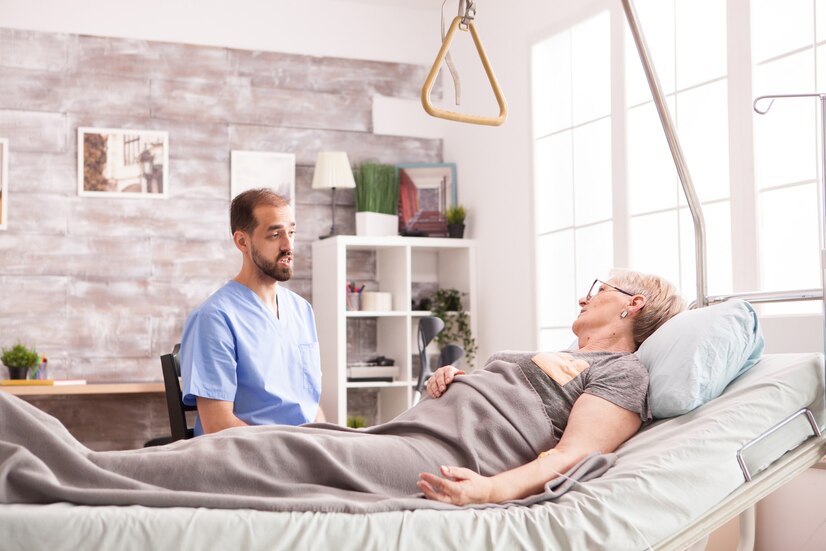Creating A Comfortable Patient Experience: The Essentials Of Medical Furniture
In the realm of healthcare, the comfort of patients is as crucial as the medical treatment they receive. A comfortable patient experience not only alleviates anxiety but can also positively impact recovery and overall satisfaction with healthcare services. Central to this experience is the medical furniture used in clinics and hospitals. This article delves into how the right medical furniture plays a pivotal role in creating a patient-friendly environment and offers tips on selecting the appropriate pieces for your healthcare setting.
Contents
The Impact Of Medical Furniture On Patient Experience
Comfort: More Than Just An Afterthought
Comfort in medical settings is not a luxury; it’s a necessity. It’s about ensuring that patients feel at ease during their visits or stays. Comfortable medical furniture can significantly reduce the stress and discomfort associated with medical examinations and treatments, leading to a more positive healthcare experience.
Functionality Meets Patient Care
Functionality is key when it comes to medical furniture. Each piece should be designed to cater to the diverse needs of patients and healthcare providers. Functionality also includes ease of cleaning and maintenance, ensuring a hygienic environment for patient care.
Selecting The Right Medical Furniture
Examining The Essentials: Medical Examination Tables
A medical examination table is one of the most crucial pieces of furniture in any healthcare facility. It should be comfortable for patients, providing enough cushioning and support. Additionally, these tables need to be adjustable and versatile to accommodate various types of examinations and procedures.
Seating Solutions: Waiting Rooms And Consultation Areas
The seating in waiting and consultation areas should be ergonomic, offering proper support, especially for those who may be in discomfort or pain. Chairs with cushioned seats and backrests, and options for bariatric patients, can make waiting times more bearable and show consideration for patient needs.
Enhancing Patient Rooms For Comfort And Recovery
Hospital Beds: A Key To Patient Comfort
In patient rooms, the bed is more than just a piece of furniture; it’s where patients spend most of their time during recovery. Hospital beds should be adjustable, easy to operate, and equipped with comfortable mattresses. Their design should cater to both the comfort and safety of the patient.
Additional Furnishings: Overbed Tables And More
Overbed tables, bedside cabinets, and other room furnishings should be user-friendly and designed with patient needs in mind. These items should be easy to move, stable, and have sufficient storage space to keep personal items within the patient’s reach.
Creating A Holistic Healing Environment
The Aesthetics Of Medical Furniture
Aesthetics play a vital role in creating a healing environment. The design and color of medical furniture should contribute to a calming atmosphere. Soft colors, rounded corners, and less clinical appearances can make the healthcare environment feel more welcoming and less intimidating.
Incorporating Patient Feedback In Design Choices
Gathering and incorporating patient feedback when selecting medical furniture can lead to better choices that cater to their needs. Understanding patient experiences and preferences can help in choosing furniture that not only meets medical requirements but also enhances patient comfort and satisfaction.
Conclusion
Creating a comfortable patient experience in healthcare settings is a multifaceted approach that extends beyond medical treatment. The choice of medical furniture, from medical examination tables to patient room beds and seating areas, plays a fundamental role in this. By focusing on comfort, functionality, and aesthetics, healthcare facilities can ensure that their environment is conducive to healing and recovery, showing patients that their well-being is a top priority.
It’s important to understand that each piece of furniture, whether it’s a medical examination table in a doctor’s office or a bedside cabinet in a hospital room, contributes significantly to the overall patient experience. These items are not just functional tools; they are part of the care environment that surrounds and supports the patient during their most vulnerable times.
Furthermore, the inclusion of modern and ergonomically designed medical furniture in healthcare settings can substantially improve the working conditions for healthcare professionals. It allows them to provide care more efficiently and effectively, further enhancing the patient experience.
By thoughtfully selecting and arranging medical furniture, healthcare facilities can create a space that offers comfort and reassurance to patients. This environment can foster a sense of calm and control for patients, which is instrumental in their journey towards health and wellness.
In conclusion, the integration of well-chosen medical furniture in healthcare environments is a critical aspect of patient care. It goes beyond mere functionality, touching on aspects of comfort, safety, and overall patient satisfaction. By investing in quality medical examination tables and other medical furnishings, healthcare providers can make a significant difference in the patient experience, contributing to better healthcare outcomes and a more positive perception of the care received.
Read Also:
- 5 Reasons Why Nurses Are So Important
- How to Prevent Pressure Sores in Bedridden Patients
- The Nursing Field Is Oversaturated! How To Stay Relevant and Earn More In Nursing



